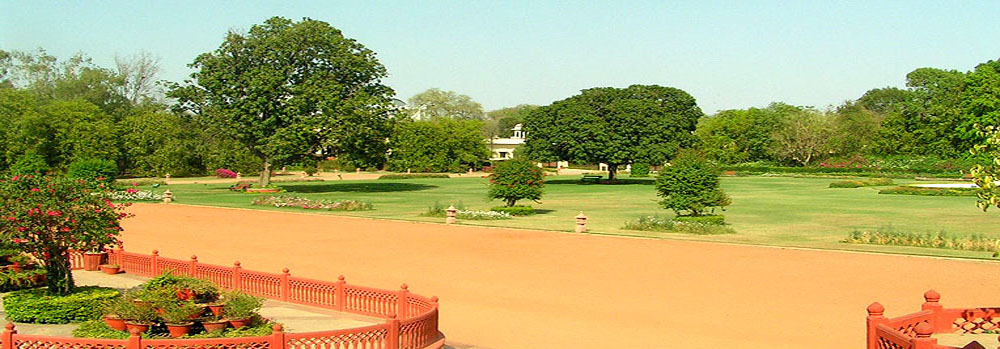|
The Ram Bagh (Hindi: Aaram bagh, Urdu: اراما باغ) is the oldest Mughal Garden in India, originally built by the Mughal Emperor Babur in 1528, located about five kilometers northeast of the Taj Mahal in Agra, India. Babur was temporarily buried there before being interred in Kabul.
The garden is a Persian garden, where pathways and canals divide the garden to represent the Islamic ideal of paradise, an abundant garden through which rivers flow. The Aram Bagh provides an example of a variant of the charbagh in which water cascades down three terraces in a sequence of cascades. Two viewing pavilions face the Jumna river and incorporates a subterranean 'tahkhana' which was used during the hot summers to provide relief for visitors. The garden has numerous water courses and fountains.
The Ram Bagh is said to have been constructed by Babur. It is commonly believed that when Babur died in 1530 his mortal remains were temporarily kept in Chaubureja a place close to Itimad-ud-Daula tomb till these were taken for the final resting place at Kabul. The original name of the bagh was Aram Bagh, which was later corrupted to Ram Bagh under the Marathas, when they occupied Agra from 1775 to 1803 AD The first historical mention of this garden site as the Bagh-Nur-Afshan led some historians to believe that this name had been derived from a garden ( Bagh –Gul- Afshan or Nur Afshan ) in Kabul. The garden was in good maintenance under Jahangir as confirmed by Tazuk-I- Jahangiri. It gets additional support from the paintings and epigraphical evidences found in some of the remaining structures of this garden. Colossal walls enclose the garden with corner towers crowned by pillared pavilions. The garden is divided into quarters by stone paved pathways. On the north- eastern side of this building, there exists another terrace, from which steps leads to a Hammam. The rooms of the Hammam, now in ruins bear evidence of a vaulted one roof. Immediately north side of this garden, there is a row of ruined houses with a gateway, built of red sandstone at each end.
The layout of the garden complex is not on the formal Char Bagh pattern, but confirms rather to the pattern of Bagh- Hasht-Behisht. In the garden three levels have been maintained, one for flowers and vegetables, second for flower beds, with fine stone paved terraces and kiosk and the third one has structures, terraces and tanks.
Open from Sunrise to Sunset.
|

